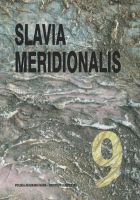Derywaty terminologiczne a struktura gniazda słowotwórczego
Terminological derivatives and the structure of a word-formation root
Author(s): Małgorzata BerendSubject(s): Language and Literature Studies
Published by: Instytut Slawistyki Polskiej Akademii Nauk
Keywords: Derivative; word-formation root; model; word; terminology
Summary/Abstract: Besides derivatives that belong to the general Polish language, the structure of a word-formation root also includes some units that bear special meanings. By projecting the lexical stock of contemporary glossaries, roots take over also those elements of lexical description, which make it possible to relate a given formation to some definite register of the Polish language. This paper contains an analysis of derivatives, whose usages are limited to some definite environments, especially scientific ones, or sporadically – social ones. They have been called terminological formations, as they create their lexical subsystem, they function within the terminology of a given area, and constitute its vocabulary representation, e.g. [ciecz-o-mierz-(Ø)] [flow-meter] Supl. techn. “an instrument that measures the volume of liquid that flows through it”. Formations that are qualified as geographical, chronological, expressive and frequentative ones have fallen outside our area of interest. The material comes from the SGS Verb volume, including 3,730 bases and approximately 35,000 derivative words, out of which 6,451 derivatives belong to terminological ones. It has been observed that the derivation degree does not affect the frequency of terminological lexemes, whereas their frequency is strictly connected with their grammatical classification. A decisive majority of qualified derivatives are Nouns; then come Adjectives, and Verbs occur only marginally. Terminological usages meet the systemicity condition by duplicating their ready-made construction models and using their worked out derivative paths, thus gaining in transparency. Nevertheless, the stability of such mechanisms may only be observed at the level of models; it is absent from the multitude of derivative techniques and word-formation types. Derivative specificity of selected qualifiers is clearly visible. On the other hand, no inheritance of qualifiers by formations, which remain in direct semantic and formal relations, has been noticed.
Journal: Slavia Meridionalis
- Issue Year: 2009
- Issue No: 09
- Page Range: 103-117
- Page Count: 15
- Language: Polish

